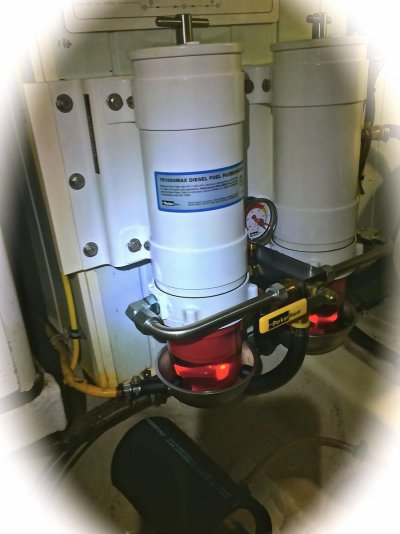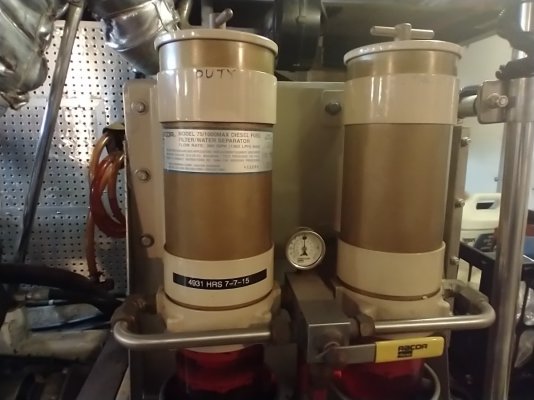menzies
Guru
Another thread reminded me that I wanted to ask this.
We have the dual Racor filter set up on each engine. Each has a Racor vacuum gauge.
I have never taken a baseline read while at cruising RPM, nor do I check them while underway. Never.
BTW, I have never had to switch to the secondary filter while cruising, and in fact they have not been changed out the last two services (professionally done).
Now I know what the recommendation is for using these gauges. My question is; how many on here use the gauges as recommended?
We have the dual Racor filter set up on each engine. Each has a Racor vacuum gauge.
I have never taken a baseline read while at cruising RPM, nor do I check them while underway. Never.
BTW, I have never had to switch to the secondary filter while cruising, and in fact they have not been changed out the last two services (professionally done).
Now I know what the recommendation is for using these gauges. My question is; how many on here use the gauges as recommended?






